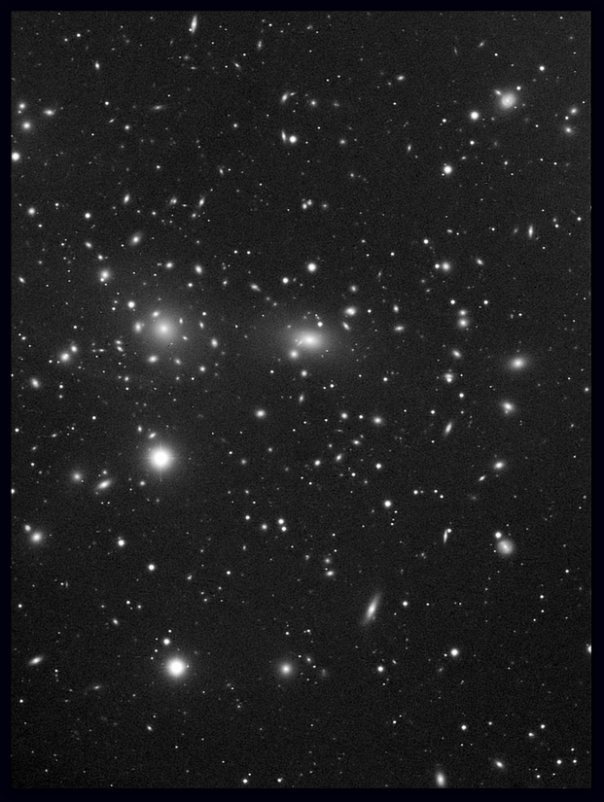|
|
Galaxies COMA CLUSTER OF GALAXIES (Abell 1656) |  | (CLICK REFRESH ON YOUR BROWSER IF IT DOESN'T APPEAR)
Equipment and exposition:
Tecnosky Apo Triplet 115
ATIK 314L with Starlight Usb filter wheel, Astronomik Filters 31,8
Guided with Starlight Lodestar with Orion OAG
Neq6 Geoptik Modded
6 x 900 sec in L channel
Processed with Maximdl,Photoshop,DSS,DSS Live
SIte : Lusernetta, West Alps, Italy
About this object:
The Coma Cluster (Abell 1656) is a large cluster of galaxies that contains over 1,000 identified galaxies. Along with the Leo Cluster (Abell 1367), it is one of the two major clusters comprising the Coma Supercluster.] It is located in and takes its name from the constellation Coma Berenices.
The cluster's mean distance from Earth is 99 Mpc (321 million light years). Its ten brightest spiral galaxies have apparent magnitudes of 12–14 . The central region is dominated by two giant elliptical galaxies: NGC 4874 and NGC 4889. The cluster is within a few degrees of the north galactic pole on the sky. Most of the galaxies that inhabit the central portion of the Coma Cluster are ellipticals. Both dwarf, as well as giant ellipticals, are found in abundance in the Coma Cluster.
As is usual for clusters of this richness, the galaxies are overwhelmingly elliptical and S0 galaxies, with only a few spirals of younger age, and many of them probably near the outskirts of the cluster.
The full extent of the cluster was not understood until it was more thoroughly studied in the 1950s by astronomers at Mount Palomar Observatory, although many of the individual galaxies in the cluster had been identified previously.
An extended X-ray source centered at 1300+28 in the direction of the Coma cluster of galaxies was reported before August 1966. This X-ray observation was performed by balloon, but the source was not detected in the sounding rocket flight launched by the X-ray astronomy group at the Naval Research Laboratory on November 25, 1964. A strong X-ray source was observed by the X-ray observatory satellite Uhuru close to the center of the Coma cluster and this source was suggested be designated Coma X-1.
The Coma cluster contains about 800 galaxies within a 100 x 100 arc-min area of the celestial sphere.
Text from Nasa |
|
|
|
|
|

